What Does It Mean to Be a Progressive Boatbuilding Company?
Meet the Two-Person Startup Reimagining Sustainability in the Leisure Yacht Industry
When we think of centers for maritime innovation, images of bustling ports, sprawling factories, and urban coastal metropolises spring to mind.
Rarely does a quaint seaside town occupy a space on that mental list.
Yet, nestled in the rolling cliffs of Lyme Regis, England, one business is playing a key role in reshaping the leisure yacht industry’s approach to sustainability and “business as usual.”
“With BlueTree, what we’re trying to do is not only push sustainability, but also push what’s possible,” says Otto Marples, co-founder of BlueTree Boat Builders.
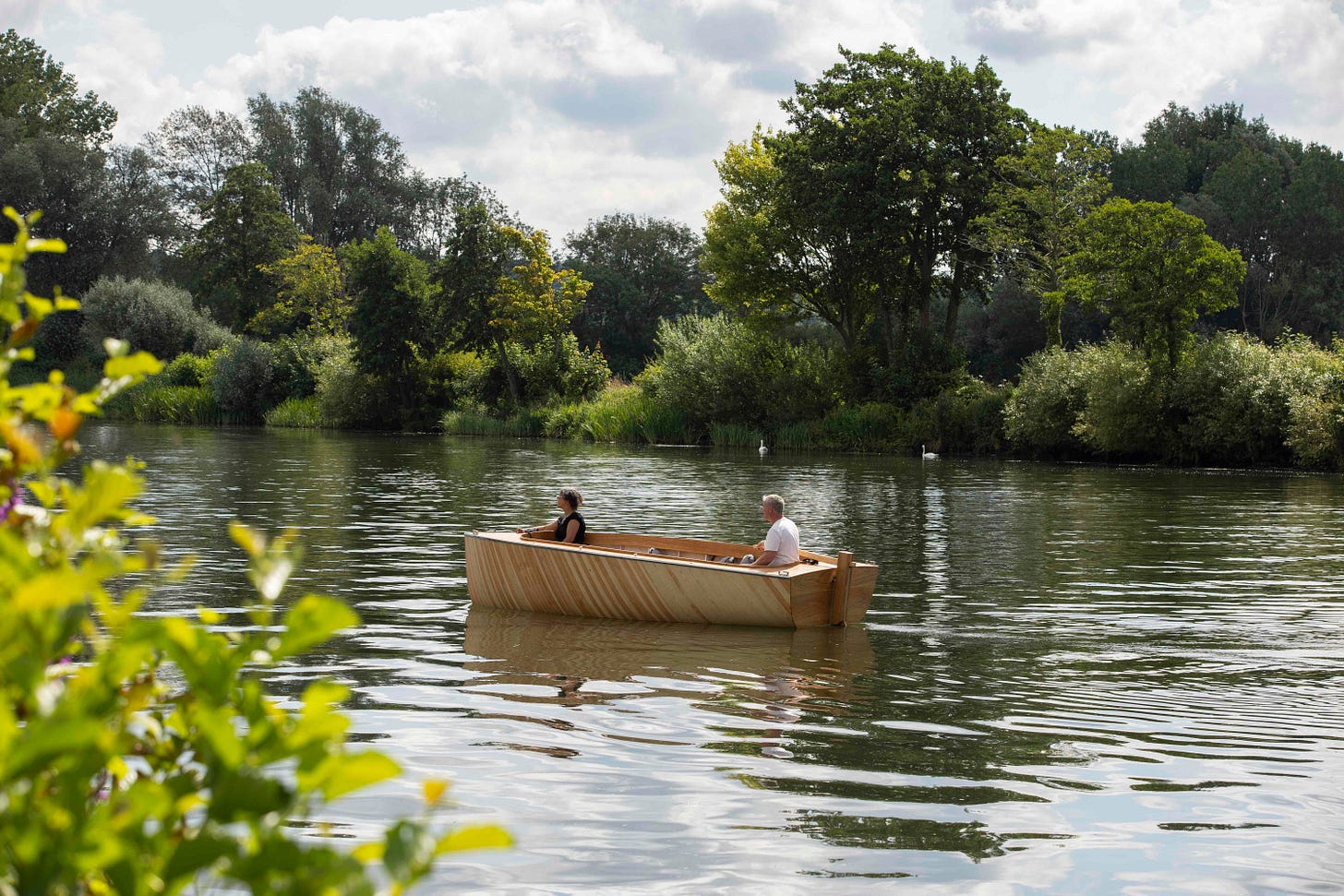
Otto and his co-founder, Obioma (Obi) Oji, have just guided me down the garden path to their workshop. Five hundred feet below, crowds of tourists throng the pebble beaches of Lyme Regis, queuing for ice cream and chips while dodging the swooping and cawing maws of hungry gulls. Yet here, tranquility prevails beneath their boatyard’s canopy of verdant trees.
Accompanied by the gentle murmur of the River Lim and the lowing of nearby cows, it is in this modest shed that BlueTree Boat Builders — guided by the tenets of their rather unconventional mission statement, Project Harmony — is reimagining what climate-conscious boatbuilding looks like.
Specializing in eco-friendly craftsmanship, Bluetree builds electric-powered wooden motor launches.
Recently, they unveiled the first production boat from their Stria range: a sleek 5-meter vessel made from Vendia marine plywood, oak, and Douglas Fir. The Stria 5 is powered by two high-performance 3500Wh lithium batteries and a Torqeedo Cruise 3.0 pod drive, underscoring Blue Tree’s steadfast abstinence from GRP (Glass Reinforced Plastic) and fuel-guzzling outboards.
BlueTree is a part of a growing movement of companies focused on reducing the environmental footprint of the leisure marine industry, particularly through their shift away from plastic construction. While the popularization of fiberglass boats in the 1960s revolutionized boatbuilding and made it more affordable, these new materials came with significant unseen costs, resulting in major environmental impacts and waste management issues.
Recycling end-of-life GRP boats is a costly and inefficient process, often resulting in their illegal disposal—colloquially known as “dead boats” or “derelict vessels.” Research from experts like Dr. Corina Ciocan at the University of Brighton has highlighted the lasting environmental impact of the derelict GRP boats, as well as the health risks they pose to humans.
As these plastic hulks break down, harmful chemicals and microplastics leach into the marine environment, with Dr. Ciocan’s studies showing that high concentrations are absorbed by bivalves, which act as a sort of canary in the coal mine for the broader human and non-human ecosystem.
Pair the end-of-life impacts with the carbon footprint of diesel engines and the cocktail of chemicals used to create water-resistant bonds, and that once-coveted shiny plastic yacht starts to look less like a luxury vessel and more like a floating hazmat warning.
While the environmental and health risks tied to improper GRP disposal highlight the pressing need for more responsible boatbuilding practices, what truly sets BlueTree apart is its commitment to a comprehensive approach to sustainability — one that avoids the traps of greenwashing and buzzwords.
When naming their company, Obi and Otto chose not to include the word “sustainability” in the title. “It was like, no, it should be a given. It’s not something that should be tacked on,” says Obi.
Their business model — and their name — represent more than just recycling or renewable energy. It’s about ensuring the long-term health of the entire ecosystem, one that also includes the well-being of their employees and the communities they serve.
Instead, Obi and Otto describe BlueTree as a progressive boatbuilding company. “We say progressive and not pioneering because we’re not pioneers; we’re using entropy,” says Otto.
Entropy, which typically refers to the tendency of systems to move toward equilibrium, serves as a fitting label for BlueTree. One of the company’s guiding principles is to bring balance between the natural world and the leisure craft industry — a mission that is tracked and guided by the forward-thinking framework of their founding document.

In the brightly illuminated entrance of their workshop, the two co-founders brim with excitement. On the computer screen before them, they pull up their company’s founding document. Scrolling to the start, they pour three mugs of tea. As my hands warm around the steaming ceramic cup, I am soon made privy to their expansive and holistic business model, aptly titled Project Harmony.
BlueTree’s Project Harmony — defined by the five key elements of People, Place, Practice, Product, and Planet — shapes the company’s comprehensive approach to boatbuilding. Unlike many in the industry, BlueTree focuses not only on environmentally responsible construction but also on a broader sense of stewardship, extending from material sourcing to workplace dynamics.
“It’s bigger than building boats,” says Otto.
Product
The heart of BlueTree’s mission lies in their vessels, the Product—undeniably one of the most vital tenets of Project Harmony. This principle encompasses not only the materials used in construction but also a crucial consideration of how the boat will ultimately be disposed of.
BlueTree’s strategy aligns with the principles of a circular economy — an economic model that seeks to minimize waste and make the most of resources by designing products for durability, reuse, and recyclability, all while fostering environmental regeneration.
To ensure they select the optimal materials for this goal, BlueTree relies on the Life Cycle Analysis (LCA) tool from Marine Shift 360. This software compares the environmental impact of various materials, evaluating everything from raw material extraction to disposal.
A key feature of this free tool is its ability to gather feedback from boatbuilders, contributing to a growing database that drives a more collaborative approach to marine sustainability. When users input data on materials, manufacturing processes, transportation, usage, and end-of-life options, the LCA tool assesses the product’s impact across seven critical indicators: Global Warming Potential, energy consumption, mineral resource scarcity, water use, marine eutrophication, and waste.
Obi and Otto use this data to make informed decisions, selecting materials that either can be maintained over time or will naturally degrade.
Wood, in particular, plays a central role in their builds, largely due to its ability to return to the earth. Obi recalls a trip to Cornwall, where she saw “plastic hulks” marooned in river deltas — a stark reminder of the long-term environmental toll of conventional “plastic fantastic” boatbuilding. This experience only reinforced their commitment to prioritizing wood in their designs.
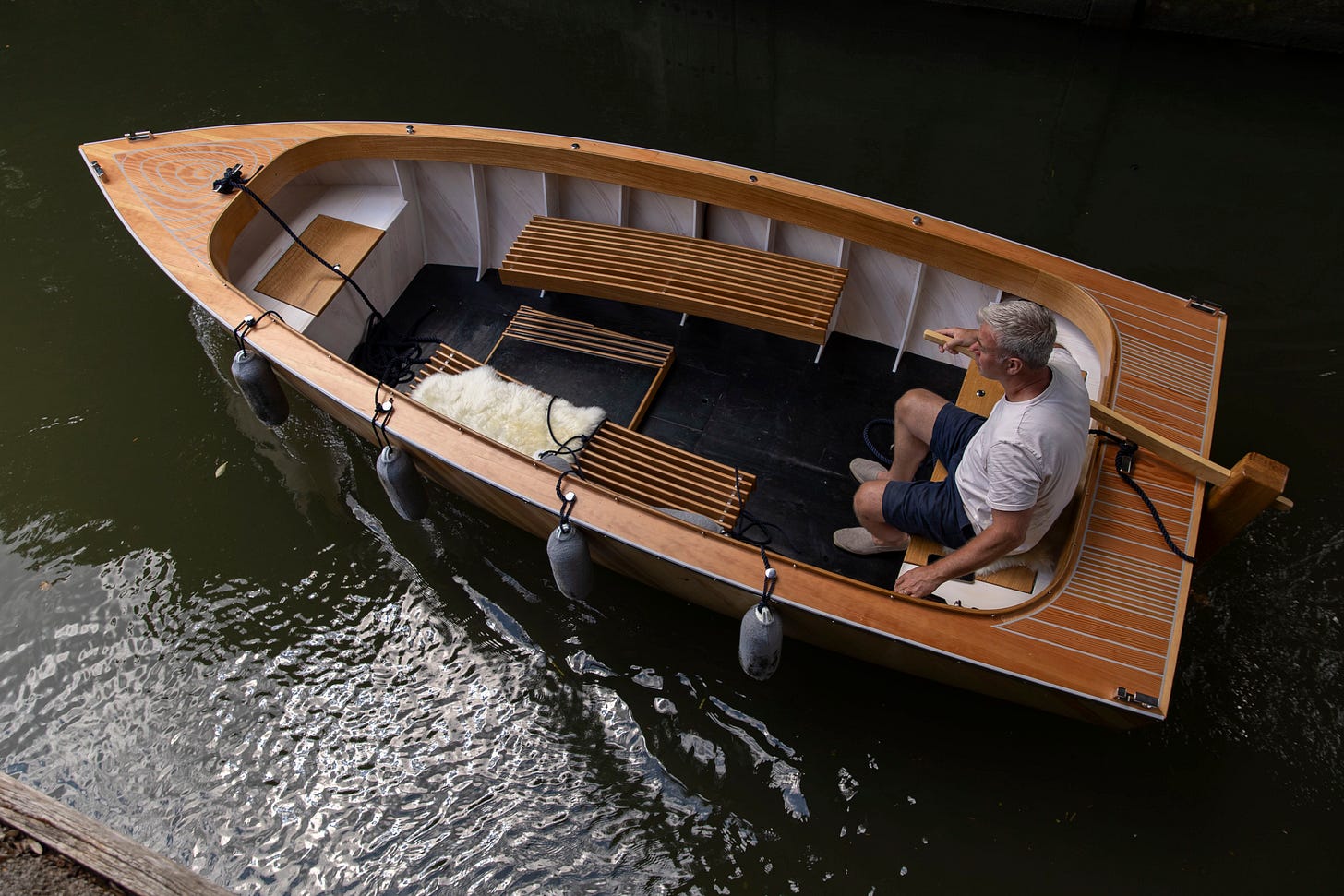
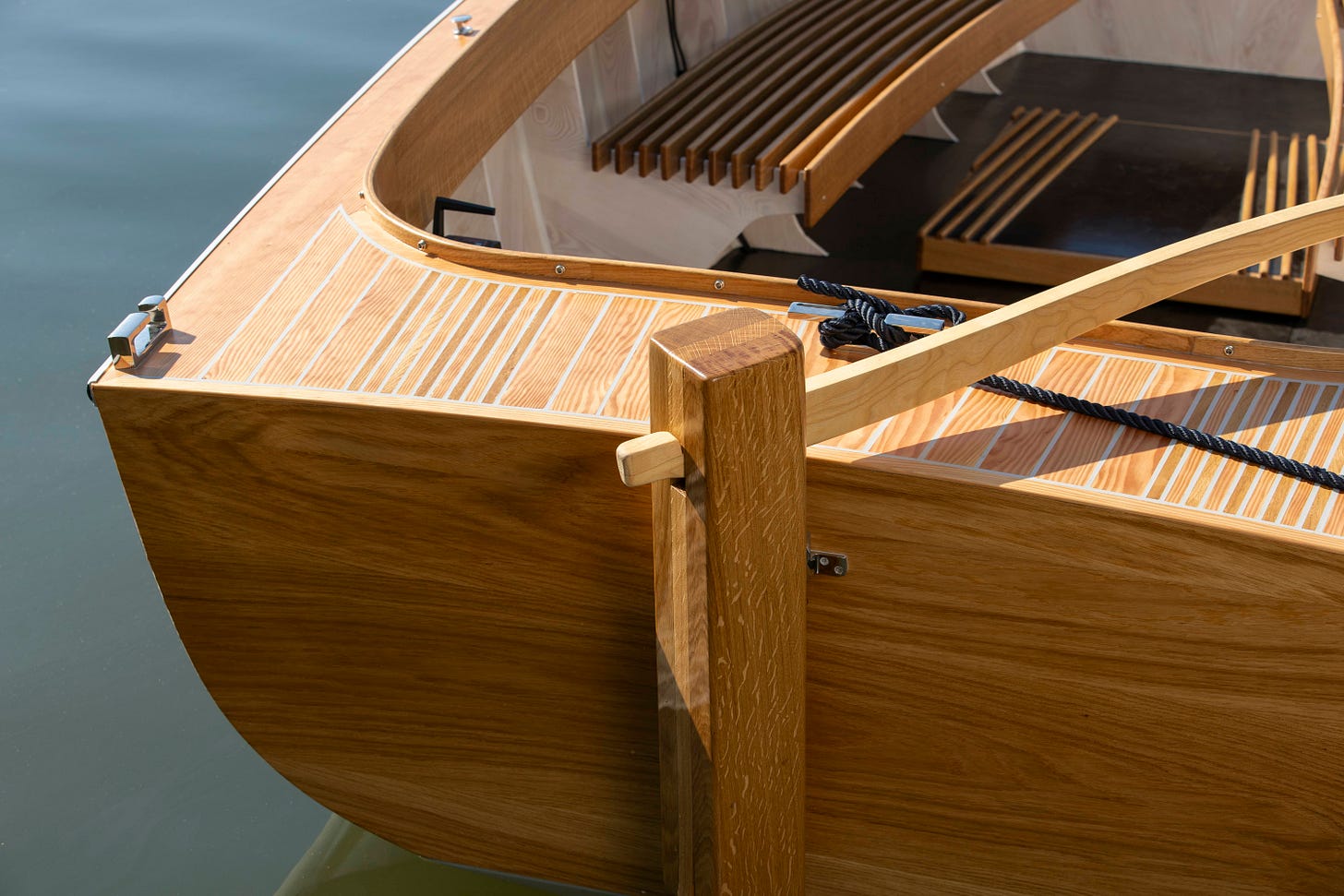
“For me, it’s more natural,” Obi says. “Wood is fixable and maintainable — you can bring it back to life. On the plastic side, it’s good for a time, but then it just fails.”
As part of its commitment to sustainability and life cycle analysis (LCA), BlueTree also pays careful attention to the sourcing of its materials.
Rather than relying on distant suppliers, they choose Vendia marine ply, a Nordic pine plywood crafted from sliced veneers. This timber, exclusively grown in Northern Europe, reduces the carbon footprint associated with long-distance material transport — an often-overlooked aspect of sustainable boatbuilding.
BlueTree is also exploring alternatives to traditional fiberglass construction. Instead of using glass in their cold-molded hulls, they opt for natural fiber composites, primarily flax, a biodegradable and sustainable material. Across Europe, several companies are making similar shifts, demonstrating that natural fiber composites can match, and even surpass, the safety of traditional GRP, with the added benefit of being environmentally friendly.
One such company, Greenboats in Germany, offers the Flax 27, a sailing vessel built from natural and recycled materials, including flax fibers, cork, and recycled PET bottles.
To further their commitment to sustainability, BlueTree minimizes the use of epoxy resins containing BPA — a substance classified by the European Environment Agency as harmful to humans and an endocrine disruptor. Instead, they use Entropy, a resin alternative that incorporates up to 29 percent rapeseed oil. As the market for marine-grade materials expands, such eco-friendly options are expected to evolve. In Australia, a 100% BPA-free bio-epoxide has already entered the market, underscoring the growing demand for natural, sustainable solutions in marine construction.
Practice
While sustainable innovation often pushes technology to “out-engineer waste,” Obi and Otto believe some of the best solutions lie in revisiting traditional practices. Rather than focusing solely on futuristic designs, they blend time-tested techniques with modern methods. This philosophy extends beyond building new boats—BlueTree also specializes in restorations, including their latest project: a wooden Chris-Craft refurbished with new environmentally sound materials.
Their approach merges modern technology with traditional craftsmanship to achieve both sustainability and safety. Though BlueTree currently prioritizes wood for its environmental benefits, they remain open to alternative materials—provided they meet strict sustainability and safety standards.
In the marine sector, however, material choices require greater caution. An untested material or faulty seal could easily turn a relaxing day on the water into a dangerous situation. “With the leisure industry, it’s got to be proven because you’re putting people in boats, and that’s a serious responsibility,” Otto emphasizes.
This sense of responsibility also shapes BlueTree’s approach to waste management, which follows a more traditional model. “The wood we use—the majority of it—can be broken down into sawdust, which is great for slugs in the garden,” Obi explains.
To minimize its carbon footprint, the company composts wood scraps in a wormery located just a few feet from its workshop. And though Obi and Otto are pleased with the results, they still wish the process moved a little bit faster.
“Eat, dammit, eat,” Otto mutters as we pass their vermicomposter.
Place
BlueTree’s commitment to sustainability extends well beyond the confines of the workshop. The company takes its responsibility as stewards of the land seriously, carefully considering its environmental impact and its relationship with local wildlife. True to their philosophy, they employ natural pest control methods, such as using lavender to keep deer at bay.
It’s yet another way BlueTree underscores its dedication to chemical-free boatbuilding, not just in the boatyard, but in the literal yard as well.
They’ve even toyed with the idea of designing wooden marine litter pickers for their clients to use during their cruises—a gesture that few others in the industry would even entertain.
“They’re still in the research lab,” says Otto, giggling.
People
Though sustainability is often seen solely as ecological balance, it can also be defined as “the ability to maintain something at a certain rate or level.” BlueTree embraces this broader definition. For them, sustainability goes beyond just boat construction and operations, extending to people—the first tenet of the Project Harmony business model.
A rising tide lifts all boats — a concept that holds true even in a land-based workplace.
When employees feel valued and supported by their employer, everyone benefits. As the World Economic Forum and the London School of Economics Business Review reported in 2019, “Higher employee wellbeing is associated with higher productivity and firm performance.”
In an industry where workers are rarely salaried and profit often takes precedence, Obi and Otto aim to challenge that narrative. As BlueTree grows and brings on more employees, they are committed to prioritizing the well-being of their future staff. Drawing inspiration from other companies in the field, the pair selectively incorporate practices they admire into their own approach.
“We’ve seen practices at other boatbuilding companies and thought, ‘That would be really nice,’” says Obi. These initiatives include supporting employees with initial tool purchases and offering after-hours access to the workshop for personal passion projects.
Planet
The final tenet, Planet, is perhaps the most visible aspect of BlueTree’s mission. Despite being a small company, their goal is to spark meaningful change in the broader marine leisure industry—leading by example.
“We’re niche, don’t get us wrong,” Otto says. “We want rebels, people willing to take a risk with us. Those people are sustainable, forward-thinking, and care about the next generation. Sustainability is embedded in everything we do, and we want our boats to go to like-minded individuals.”
As BlueTree continues to innovate, their work offers a hopeful vision for the future of the marine industry—one that includes climate-conscious builders as key players in the shift toward a more habitable planet.
But for Obi and Otto, their mission extends far beyond simply building boats. They are creating a holistic model for the marine sector, one that considers not only the environment but also the people and places that shape it.
When asked about the future of BlueTree, Obi and Otto are thinking about more than just products. Their business model revolves around cultivating a healthy community, both in terms of employment and experience.
Though BlueTree already shares coworking space with other artisans and creatives, they want to stay rooted in “a community of other businesses,” as Obi puts it. Their vision is for a hub that offers employment, social connection, and hands-on learning—where the business model is about more than just profit, but about strengthening local communities.
“It's about getting more people to connect with the water in some way,” Obi says. “It’s this experience—I think it will be lovely to share it with more people.”
In Port Townsend, Washington, a similar social shipbuilding model is already thriving. This town of 10,000 on the Olympic Peninsula hosts a range of marine businesses that work in close proximity, where cooperatives, tool-sharing, and public spaces foster both community and the exchange of ideas.
BlueTree envisions something similar—only with a sharper focus on sustainability.
“This is a formula for a circular economy,” Otto says, “a sustainable place that brings people together, provides employment, supports thriving local economies, and can be modeled anywhere it’s needed.”
Obi and Otto hope BlueTree will become a blueprint for a healthier, more ethically driven marine community, one that acts as a hub among many—a shining star in a growing constellation.
“Can you put one in Northumberland? In Cornwall? In Scotland? In France? In the US or Canada?” Otto muses.
In redefining success, BlueTree demonstrates that impact can be as valuable as income. What matters more than their environmental footprint—or lack thereof—is the example they set, proving that when principles are prioritized alongside profit, meaningful innovation is not only possible but inevitable.
When profit is the sole focus, we risk losing sight of what truly matters.
But when balance is struck—between people, planet, and the vessels that carry us through both—the extraordinary can emerge from the most unassuming places, even small seaside vacation towns.
To learn more about BlueTree Boat Builders or commission your next vessel (they also specialize in restorations), click the link below or connect with them on social media.


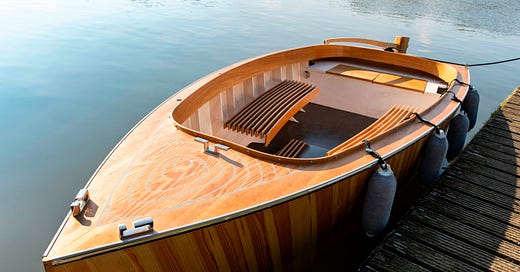


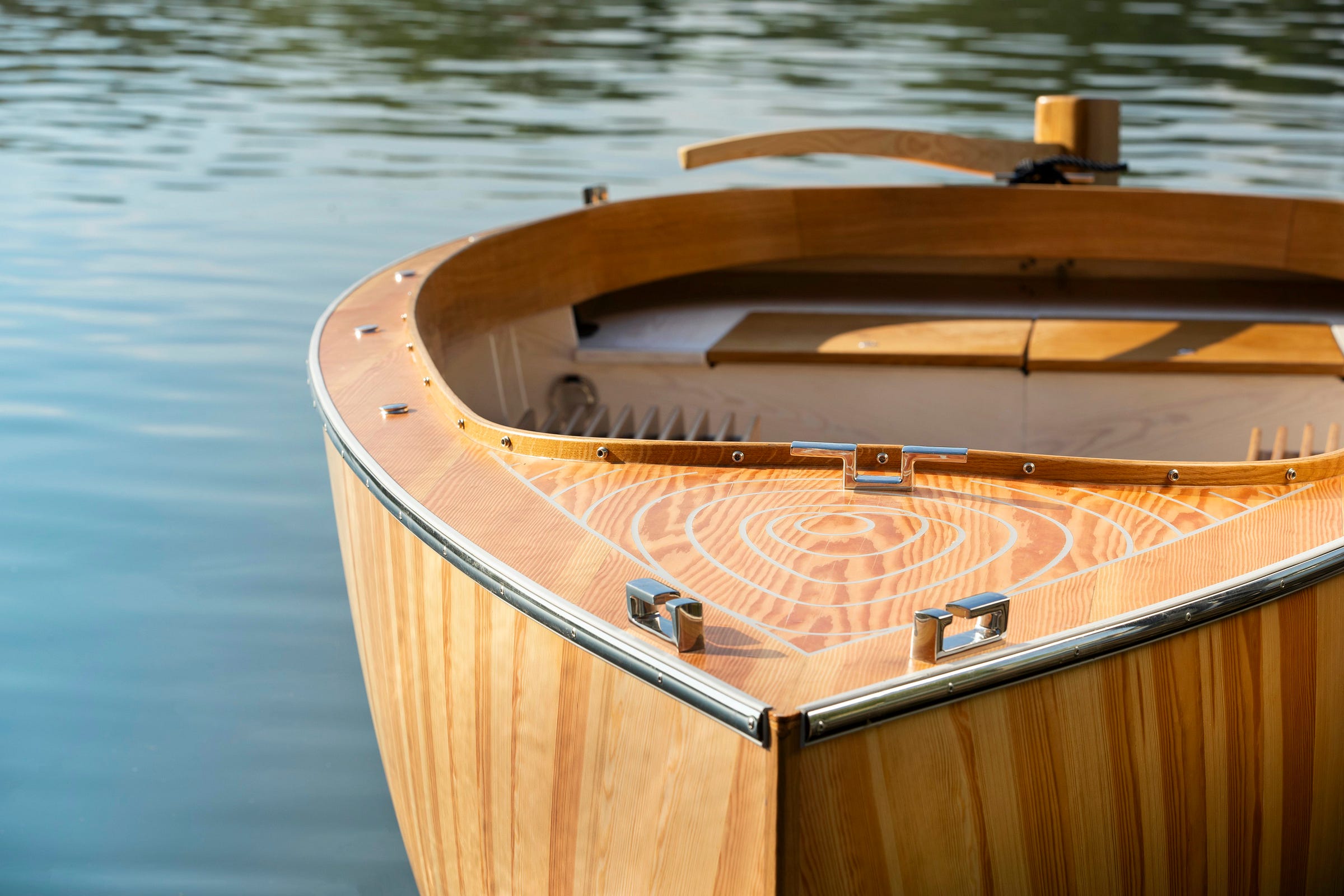


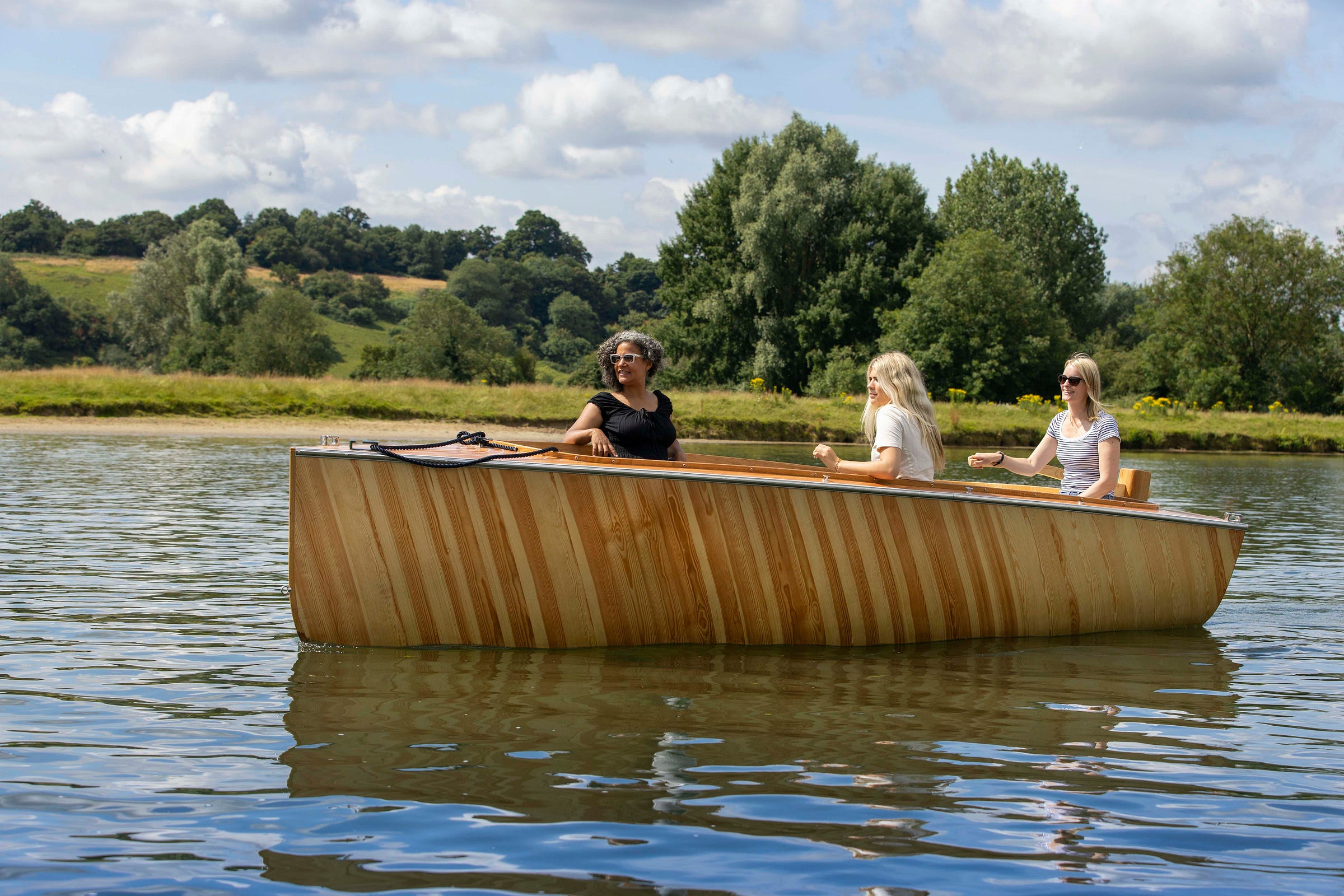

Aren’t wooden boats so beautiful? I think the term/concept of “using entropy” Will be the topic of choice in my conversations this week.